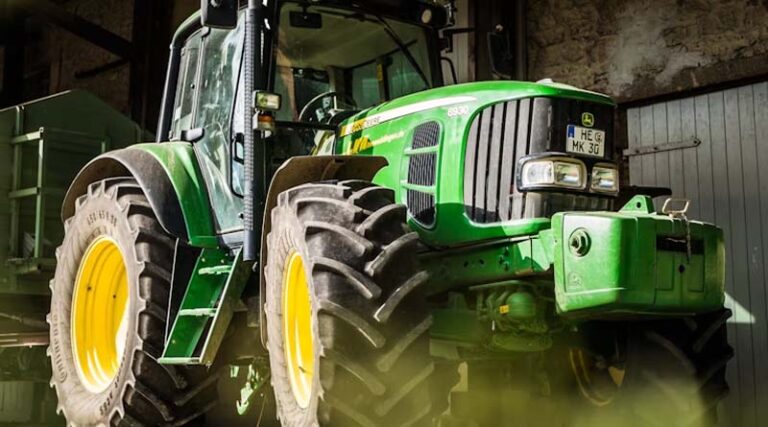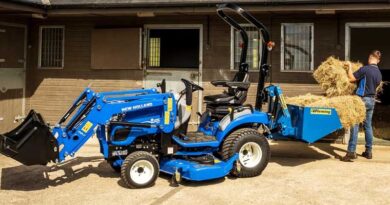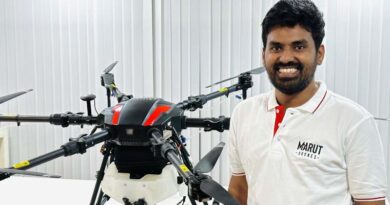
Technical Tractor Trends at Agritechnica 2025
By Roger J. Stirnimann, Agricultural Engineer, Industrial Engineer, Executive MBA – HAFL, Zollikofen (Switzerland)
08 October 2025, Switzerland: Agritechnica 2025, the world’s largest exhibition for agricultural machinery, is set to unveil the most advanced tractor technologies seen to date. Many manufacturers have already revealed new innovations or entered them into the Agritechnica Innovation Awards, while others are reserving major announcements for the November event. This preview outlines key developments across engines, transmissions, hydraulics, electrification, and digital assistance systems — based on confirmed information available until mid-September 2025.
Internal Combustion Engines Enter a New Phase
The evolution of tractor engines has entered a new chapter. After years of focus on reducing nitrous oxides and particulates to meet Stage 5 emissions norms, the industry’s attention has shifted toward cutting carbon dioxide emissions. This change in focus has accelerated the adoption of alternative fuels.
Several manufacturers now approve their existing diesel engines for operation with renewable fuels such as rapeseed methyl ester (RME) and hydrogenated vegetable oil (HVO). These “drop-in” fuels can fully replace fossil diesel without requiring any mechanical modification to engines or tanks.
Meanwhile, research continues into fuels such as ethanol and hydrogen. Ethanol, while having lower energy density than diesel, can be particularly appealing in countries like Brazil, where it is produced from sugarcane or maize. Case IH has introduced the Puma 240 tractor with a modified six-cylinder N67 engine adapted to run on ethanol, specifically targeting such markets.
Refinements in Engine Peripherals
As diesel engines approach their maturity, manufacturers are increasingly optimizing peripheral systems to improve efficiency, safety, and longevity. Several new tractor series launching at Agritechnica 2025 will feature automatic reversing fans that enhance cooling efficiency.
Another important area of innovation is in continuous braking systems that help protect service brakes on steep terrain. CNH has developed a decompression valve system that increases engine drag torque, a technology borrowed from the truck industry. Fendt, in its new 700 Gen7.1 and 800 Gen5 series, combines variable turbocharger geometry with a hydraulic auxiliary brake that converts kinetic energy into heat.
Fendt has also expanded its automatic dust extraction system, which previously focused only on the engine air filter, to include the cabin air filter in the new 800 Gen5 and 1000 Gen4 models. The latest 1000 series continues to use MAN’s proven D26 six-cylinder engine with a 12.4-litre displacement, now equipped with DynamicPerformance (DP), which boosts output by up to 30 horsepower. The top model, the 1052, reaches 550 horsepower. To ensure compatibility with various implements, Fendt has introduced AdaptivePower, a system allowing the operator to select reduced power curves of smaller models via the FendtONE terminal. This prevents implement overload and supports lower fuel consumption during lighter work.
New Transmission and Chassis Concepts
In transmission technology, Fendt continues to expand its VarioDrive permanent all-wheel-drive system up to 25 km/h, now available across all major series from the 500 to 1000 range. CNH has further developed its stepless gearbox design, adding a third forward range to its T7 short wheelbase models and upgrading the larger continuously variable transmission to handle higher power outputs. JCB has transitioned to ZF stepless transmissions and FPT engines in its new Fastrac 6000 series, replacing its previous AGCO suppliers.
A breakthrough innovation comes from AEBI Schmidt, which will present its Line Traction Version 3 (LT3) drive system in the AEBI TERRATRAC slope implement carrier. This hydrostatically supported drive concept eliminates both longitudinal and transverse differentials. Each wheel is driven at the correct speed based on steering angle, vehicle geometry, and speed. The result is improved traction, reduced soil disturbance, and greater stability on slopes — especially when turning.
Chassis development is equally dynamic. To fully exploit the advantages of modern radial tyres, several manufacturers are offering integrated tyre pressure adjustment systems. Claas and McCormick are introducing factory-fitted central lubrication systems for their large tractor models, with Claas extending this feature to its TERRATRAC track drives. CNH’s latest large tractors now feature independent suspension and integrated disc brakes mounted centrally on the chassis. The new Advanced Vehicle Suspension system coordinates cab and axle damping, providing a smoother ride and improved control.
Hydraulics Move Toward Dual Circuits and Digital Integration
Hydraulic systems in large tractors continue to evolve toward higher precision and efficiency. The trend toward dual hydraulic circuits — one for continuous loads such as air seeder fans and another for intermittent demands like lifting cylinders — is becoming standard. Separate oil tanks further reduce contamination and extend system life.
Load-sensing hydraulic systems have long been a hallmark of premium tractors. However, manufacturers are now introducing electronically controlled load sensing, known as e-LS. Fendt’s latest tractor ranges, including the 500 Gen4, 600, 700 Gen7.1, and 800 Gen5 series, already feature e-LS systems.
The shift toward digital hydraulic communication is also gaining ground in implements. ROPA’s Keiler II RK22 potato harvester is among the first to adopt this approach. Together, Fendt and ROPA have developed e-LS connect, which allows load pressure data to be exchanged digitally through ISOBUS, eliminating the need for traditional LS cables.
Electrification Expands but Faces Economic Barriers
Battery-electric tractors are gradually entering the market, mainly in lower power ranges, but the high cost of batteries remains a limiting factor. While they offer lower running costs, their purchase prices are nearly double that of diesel counterparts. Nevertheless, global manufacturers are steadily advancing this technology.
China’s ZSHX Advanced Tractors will showcase the XEEVO E904i, a fully battery-powered tractor with dual motors and a 105 kWh LFP battery capable of rapid DC charging in one hour. With a projected price of around €100,000, it represents one of the most affordable options in its class.
John Deere will also present a 96 kW (130 hp) battery-electric tractor built on a platform designed from the ground up for electric propulsion and autonomous operation. Its modular battery packs provide a total capacity of up to 195 kWh, supported by an 800-volt system similar to that used in luxury cars. The model integrates multiple electric motors to power the drivetrain, rear PTO, and hydraulics.
Startups such as ONOX and TADUS are also making progress in this space. TADUS, which presented a prototype at Agritechnica 2023, is now launching a 100 kW battery-electric tractor featuring distributed-drive architecture. Meanwhile, India’s TAFE is exploring hybrid technology with its EVX 75 Diesel-Electric Hybrid Tractor, which combines a 55 kW diesel engine, two electric motors, and a 25 kWh battery. China’s Zoomlion is targeting the high-power segment with an electrically driven gearbox-axle unit for tractors up to 400 horsepower.
Cabin Comfort and Assistance Systems Take a Leap Forward
Digitalization and automation are reshaping how tractors are operated. Claas has developed an adaptive drive train management system for its new Axion series. The system uses real-time efficiency curves and adaptive algorithms to anticipate load changes, such as when entering or leaving a field. It automatically adjusts engine speed and gear ratios to maintain optimal power delivery and fuel efficiency.
Deutz-Fahr is introducing the Advanced Driver Assistance System (ADAS) for its new six-cylinder models. It includes lane departure warnings, turn assist, and object detection. The advanced package adds adaptive cruise control, collision alerts, and traffic sign recognition. The system has been adapted for agricultural conditions such as narrow roads, side paths, and close operation alongside forage harvesters.
Lindner’s SmartLift2, available in the new Lintrac 160 LDrive, optimizes front-loader operation by automatically adjusting steering response, hydraulic behavior, and transmission control for smoother handling. Assistance technology is also being extended to trailers, with new drag brake systems that automatically engage trailer brakes when descending slopes and automatic steering axle locks that enhance safety at higher transport speeds.
A Glimpse of the Future
Agritechnica 2025 will mark a significant step forward in tractor innovation. From renewable fuels and advanced hydraulics to fully electric drivetrains and autonomous-ready systems, the agricultural tractor is evolving from a purely mechanical machine into a smart, efficient, and environmentally conscious powerhouse.
While challenges such as high battery costs and system integration persist, the pace of development suggests that the modern tractor is poised to become not just a tool for farming, but a central component of digital, sustainable agriculture worldwide.
📢 If You’re in Agriculture, Make Sure the Right People Hear Your Story.
From product launches to strategic announcements, Global Agriculture offers unmatched visibility across international agri-business markets. Connect with us at pr@global-agriculture.com to explore editorial and advertising opportunities that reach the right audience, worldwide.






